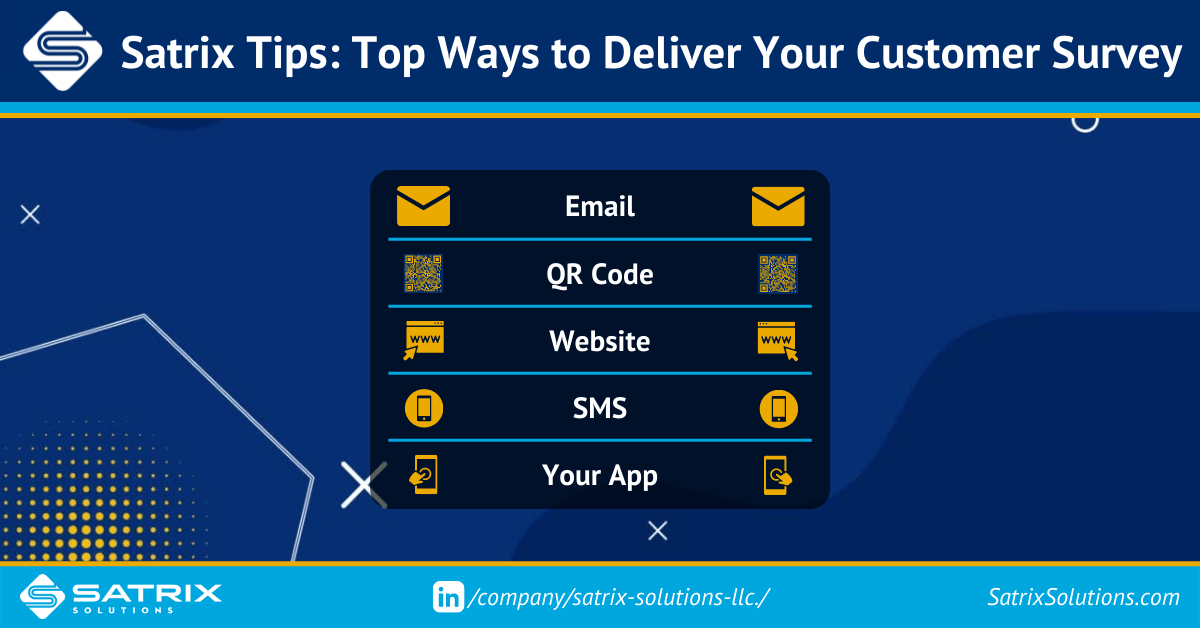One of the biggest obstacles to collecting actionable data from online surveys is getting people to take it. And one way to boost survey response rates is to ensure you’re reaching as many people as possible by utilizing more than one distribution method. So…how should you distribute your online survey?
When requesting employee feedback, you must consider factors such as distributed workforces and collective bargaining agreements for employee surveys when considering the best ways to reach them. Likewise, some of the contacts targeted may not have regular access to email and need to be reached in other ways.
It’s worth it to spend time thinking about who your target audience is and what kind of sample size you need when considering ways to distribute your online survey. The more opportunities you provide for people to give feedback, the better your response rates will be—and the more valuable data you’ll be able to collect.
Here are the best ways to distribute your online survey for maximum results:
- QR Code
- Blog Post
- Text Message
- Your App
Email is probably the most popular online survey distribution method. Email is commonly used for customer satisfaction surveys, net promoter surveys, and onboarding surveys. It’s easy to set up and to automate, and most tools allow you to add a degree of personalization, such as addressing them by their first name, to better connect with the recipient.
Email remains a top choice for a couple of reasons. One, there are little to no additional costs for distribution. Second, you can send reminders to those who haven’t replied, which increases the chance of survey completion. Using email to distribute your online survey also can allow you to track who has opened the email, clicked on the link, and filled in the survey.
On the other hand, you do have to worry about delivery rates. And surveys can sometimes end up in SPAM folders instead of inboxes. Before you send your survey via email, I encourage you to review CAN-SPAM Laws.
Quick Response (QR) Codes
QR codes are a graphic visualization of a web link, which is “read” by a QR code reader on a smartphone. Recipients use their app to scan the code, immediately opening the online survey.
Depending on your audience, you can have them printed on a direct mail piece, business cards, posters, stickers, or even screens—anywhere a customer or employee might encounter one. This method works especially well for employees in a non-traditional workspace, such as construction sites, where checking email isn’t a priority. QR codes are implemented commonly for employee satisfaction surveys, employee net promoter surveys, employee opinion surveys, and employee engagement surveys.
For public surveys, QR codes can be added to your social media pages, such as Twitter or LinkedIn. The benefits of using a QR code are that there is no additional cost to distribute. You can also easily reach a wide-spread audience, which can be posted to your site, so you know the individual taking the survey is already interested in your company.
Website or Blog Post
What better place to gather feedback than your own web properties? From simple popups to callouts on your blog to more interactive elements embedded in media, such as videos, there are many ways you can capture survey feedback.
Collecting feedback on your website gives you a two-for-one benefit—you get valuable feedback, and you keep visitors on your site longer. And since visitors are already confirming their interest by being on your site or blog, they’re likely to be more interested in this interaction with your brand. We like to announce customer advisory boards with blog posts.
SMS Messaging
Is your audience tech-savvy or known to be heavy smartphone users? If so, you’ll want to consider delivering your survey via SMS. People, whether employees or customers, are becoming more comfortable with receiving SMS messages from companies, so this likely won’t be an unexpected way to receive communication.
With SMS messaging, you have two options to distribute your online survey. The easiest is simply sending a message with a URL link to the survey, which users can click to open on their phone. This works well for customer churn surveys.
Another option allows them to complete the survey over time by receiving one question at a time and replying right in the SMS messaging application. This low-pressure approach lets recipients answer at their own pace.
The only drawback to SMS messaging is the 160-character limit per text message. Plus, if you go the question-by-question route, you’ll likely have increased costs if you’re charged by message.
Via an App
You can encourage people to take your survey through an app rather than a website or SMS environment. This one is a little more of a burden on the part of the recipient.
The easiest way is to send them an SMS that links to the app in the phone’s respective app store, where they can download the app and take your survey. The SMS token that opens the app allows you to track the respondent’s information for segmenting analysis at a later time.
Remember that the recipient must have a data connection to receive the SMS messages and download the application.
In addition to these five ways to distribute your online survey, many companies employ phone or paper-based surveys. Not every method works for every company or even every survey. Working with an expert partner like Satrix Solutions will help you analyze your survey’s goals, audiences, and long-term strategy and inform the mix of delivery methods that will best achieve your desired results.

